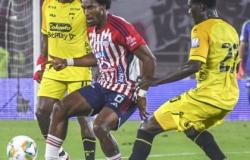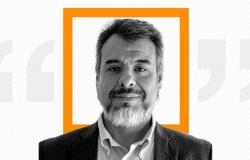
There is no specific age to injure an articulation, although the risk increases in youth and during sports. Dr. Ariel Saldaña, Orthopedic surgeon and medical director of the Paitilla Hospital-Part of the International Private Health Network Hospiten that has 20 private medical-hospital centers located in Spain, Panama, Dominican Republic, Mexico and Jamaica-confined with two young patients who suffered knee injuries and who, thanks to surgery and a integral rehabilitation program, have achieved excellent results.
Anastasia Linares, 25, dedicated much of his life to ballet and contemporary dance, participating in competitions and presentations at the international level. However, it was a ski accident that caused the breakdown of the anterior cross ligament and the meniscus of its knee. “At that time I was studying physiotherapy, so when I fell and heard the noise my knee made, I knew it was something serious. I couldn’t get up and my leg was fixed; I couldn’t move it in any direction,” Anastasia says.
The situation was especially difficult for her, who in addition to studying, worked. “Immobility and the need to depend on others for everything basic complicated everything even more,” he says. In this context, Dr. Saldaña explains that when a diagnosis is confirmed that requires surgery, it is not done immediately. A prior physiotherapy phase is fundamental-known as “pre-tabilitation”-to avoid tissue fibrosis and preserve the range of joint movement.
For his part, Regina Espino, 18, is a footballer and paddle player at a competitive level. He played in leagues like Taurus and Sporting from an early age. “The ironic is that I had already retired from football and I was standing out in paddle … and he played football that I was injured,” he says. Regina’s injury occurred in September 2024, so it is in a more recent recovery stage. “I also listened to the sound of my knee. It’s something that I don’t forget. I already knew what it was because both my mother and my dad had the same injury,” says Regina.
Anastasia also had doubts: “At first I believed that surgery was bad for a young athlete. I had already had an injury at age 11 and danced with pain for a long time. I thought I could recover without surgery. But when talking with the doctor and solve my doubts, I decided to operate to rebuild this ligament so important for the knee.”
Regina adds: “I was in denial. It was a very difficult night. In the background I knew it was the cross ligament. Then, the resonance revealed that the meniscus, the collateral ligament and other structures were also compromised.”
-Dr. Saldaña clarifies that not all cases require surgery. In many patients, rehabilitation and medical treatment are sufficient, but in others, surgical intervention is indispensable. The decision depends on the objectives, physical condition and lifestyle of the patient.
Postoperative therapy is key to successful recovery, as well as the strict monitoring of medical indications. “Between the third and fourth month after surgery, it is common for the patient to feel that the knee is perfect and feels tempted to make more than the account. That is the moment of greatest risk because, although there is no pain, the tissues have not yet healed completely,” warns the specialist.
Emotional and mental factors also play a fundamental role. “When they told me that I needed surgery, my first question was:” When can I play again? ” Anastasia adds: “It is important to know how to ask for help. It took me about a year to resume training without fear of injuring myself again. I was recovering confidence little by little.”
Both agree: “We must combat negative thoughts, meditate, write, talk to people who have gone through the same. Each body has its rhythm, we cannot compare ourselves. The most important thing is to follow the therapy indicated by the doctor, especially the first week after surgery.
To conclude, Dr. Saldaña calls for patience: “The body has its own rhythm to heal. The patient is the one with the greatest responsibility: it must be exercised at home, pay attention to the signs of his body, avoid excesses. And as a preventive measure, I recommend practicing sports, exercising regularly to improve metabolism, reduce the risk of chronic diseases, prevent osteoporosis and maintain muscle mass.”
Fountain. Paitilla Hospital





